#apogee & perigee
Text
Guys
GUYS
Remember how Ashley Johnson was in Recess as a kid? And they made a feature-length movie?
Remember THIS scene?!
youtube
That makes Critical Role Campaign 3 the SECOND time Ashley Johnson has had to deal with a bad guy who wanted to mess with a moon during a major astrological event!
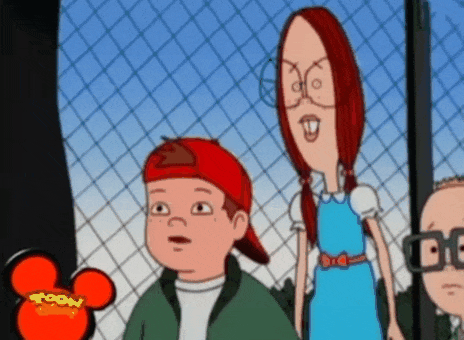
The parallels are actually uncanny:
Both villains:
Are petty, vengeful, and power-hungry,
Plan to get rid of something sacred (the gods vs. summer vacation)
Have beef with an authority figure the heroes are familiar with (Raven Queen vs Principal Prickly)
Are leaders of a secret conspiracy that is years in the making, one with potentially devastating consequences for the world beyond the scope of the plan (moving the moon during lunar perigee has the potential to not just get rid of summer vacation, but full-on send the world into another ice age).
Matt. Be honest. Was this whole Ruidius plan secretly inspired by Recess???
#critical role#bells hells#ashley johnson#recess#recess school's out#recess the movie#ruidus#the moon#apogee solstice#of corse the recess kids somehow managed to be more successful at preventing an apocalypse than a bunch of adventuring adults...#dunno what that says about BH#lunar perigee#Youtube#fearne calloway#gretchen grundler#parallels#critical role parallels
84 notes
·
View notes
Text
I don't post enough art here. Here's me butchering the lighting on a drawing of Apogee and Perigee and then going back to fix it.
0 notes
Text

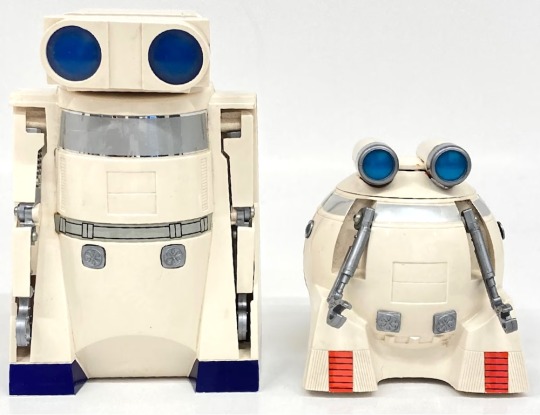


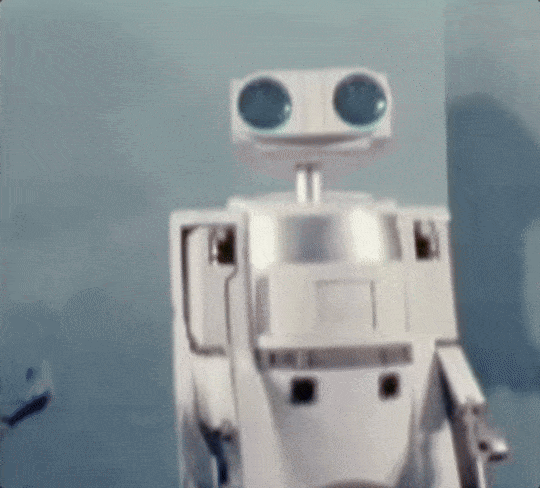
MildRobo Sensor Robots (AKA Apogee & Perigee) by Bandai and Popy, Japan (1984). The full-sized versions, Apogee & Perigree, originally featured in a Suntory Whiskey commercial in 1984, and made an appearance at the 1984 Tokyo Toy Show (see video above). The popularity of the commercials spawned a range of toys that came out in Japan in 1984, and the US in 1985. The Sensor Robots come with a set of 13 course panels that can be configured to form a track. MildBoy (Apogee) follows the track using the four photocells in its base (third image), until it falls into the waiting arms of MildGirl (Perigree).
133 notes
·
View notes
Note
‘If you can’t handle me at my apogee you don’t deserve me at my perigee’
i am not a lunar girlie so i only vaguely know what you mean gimme a minute on wikipedia
Askbox is closed for new requests, I'm recording these old ones on the to-write doc
59 notes
·
View notes
Photo

The Full Moon of 2021 : Every Full Moon of 2021 shines in this year-spanning astrophoto project, a composite portrait of the familiar lunar nearside at each brightest lunar phase. Arranged by moonth, the year progresses in stripes beginning at the top. Taken with the same camera and lens the stripes are from Full Moon images all combined at the same pixel scale. The stripes still looked mismatched, but they show that the Full Moon's angular size changes throughout the year depending on its distance from Kolkata, India, planet Earth. The calendar month, a full moon name, distance in kilometers, and angular size is indicated for each stripe. Angular size is given in minutes of arc corresponding to 1/60th of a degree. The largest Full Moon is near a perigee or closest approach in May. The smallest is near an apogee, the most distant Full Moon in December. Of course the full moons of May and November also slid into Earth's shadow during 2021's two lunar eclipses. via NASA
402 notes
·
View notes
Text
Okay but consider: ASTRONOMY LESBIANS
This specific post is going to be me gushing over the astronomy potential Touka and Nemu have with each other and why it makes me feral, it's more me pointing out some things than any actual analysis. Still, here you go, have fun!
So, this is the thesis: Touka is the sun/day and Nemu is the moon/night.
First of all, night and day are intrinsically connected. The sun's light gives the moon its glow during the night and the moon remains present and visible during the day, if a little harder to see in the full light of the sun. The former sounds an awful lot like how Touka gave Nemu visibility to the general public through the website for her books and continues to do so on the regular, dutifully, and the latter is to me the same effect as any scene they're in together; everyone in-universe and outside of it always pays more attention to Touka, because she's the more boisterous one, louder, etc. The radiant sun, too bright to ignore compared to the soft glow of the moon.
Now, I love the moon's effect on the oceans on Earth. Its control over the tides is due to its gravity being strong enough that the tide is pulled slightly closer to it. If you look at when the tides are highest, you'll see that tides are always highest when the moon is directly overhead, but there's also another high tide on the opposite side of the planet. If you mapped it out, you'd get this oval shape of the tides, where a "tip" of the oval is always pointing at the moon. Well guess what, the SUN also does this! It's just less noticeable, but it's why low tide doesn't always happen when you think it would. And since they both do this, their effects can be combined! This is why the highest of tides always occur around full and new moons, with the effects being even stronger during lunar eclipses, and with solar eclipses being the strongest of them all, which probably added to the effect of ancient civilizations freaking out during them cause the tide was so high, it just added to the chaos of the sun being blocked out too. Tides are highest about the full and new moons because that is when the moon and the sun are lined up. Gee doesn't that sound familiar and like it could apply to a certain pair of idiots who work really well together (as per Ui's words).
Here's a helpful visual gif for the tide thing and some quotes from the National Ocean Service:
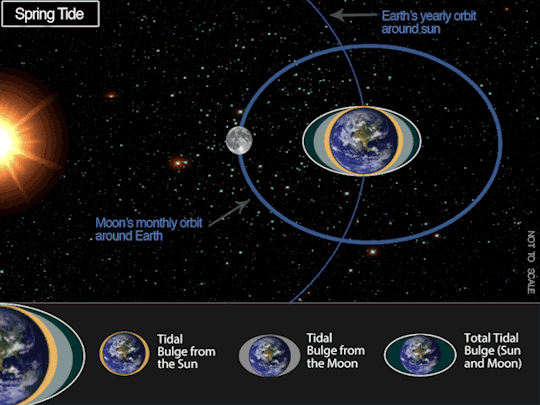
Together, the gravitational pull of the moon and the sun affect the Earth’s tides on a monthly basis. When the sun, moon, and Earth are in alignment (at the time of the new or full moon), the solar tide has an additive effect on the lunar tide, creating extra-high high tides, and very low, low tides — both commonly called spring tides. One week later, when the sun and moon are at right angles to each other, the solar tide partially cancels out the lunar tide and produces moderate tides known as neap tides.
And as a fun extra:
Once a month, at perigee, when the moon is closest to the Earth, tide-generating forces are higher than usual, producing above average ranges in the tides. About two weeks later, at apogee, when the moon is farthest from the Earth, the lunar tide-raising force is smaller, and the tidal ranges are less than average. When the Earth is closest to the sun (perihelion), around January 2 of the calendar year, tidal ranges are enhanced. At aphelion, when the Earth is furthest from the sun, around July 2, tidal ranges are reduced
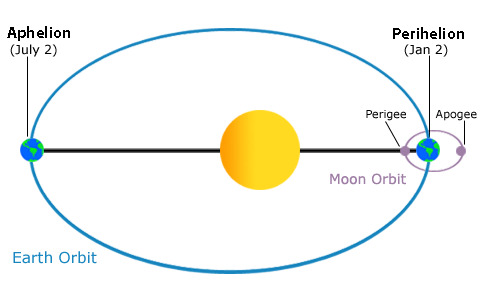
So like. I don't think I need to point out the moon's distance from the sun and its effects here. Now let me go to something else: Touka and Nemu have a dual unit, the attribute of which is darkness. Here's a tidbit about it that I yoinked from another post:
Your pupils contract in response to visible light, but not all of the sun’s light is visible. During an eclipse, your pupils widen because it’s dark, but there’s an outer layer around the sun that mostly only puts out light that’s not visible to us, but that can still damage your retinas. Thus, looking at an eclipse makes your pupils open up like it’s dark, which lets more of the invisible damage beams in.
The sun doesn’t get a critical multiplier on its damage when HP is low. Equipping the moon gives the sun a bonus to backstab.
And then I pointed out the dual unit and its attribute, like an eclipse. Such an apt metaphor. Now, this isn't all, though the astronomy rant is far less connected and organized than the other more essay-ish posts, but I just wanted to cover at least some of the bond things before I yell about why each of them fits their assigned astral body/time so well. Actually... Let's consider the solar wind for a second.
So, for those with less astronomy knowledge, here are the basics. The sun releases a continuous outflow of particles and radiation that we call the solar wind. The solar wind washes over the planets, moons and other bodies in our solar system, and every object, planet or person traveling through space has to contend with this. Our moon in particular has the scars (or bad tan) to prove it. Ever wondered what gives the moon that distinctive pattern of darker and lighter swirls? That would be the sun over there. Or, well, research suggests that the solar wind and the moon’s crustal magnetic fields (bubbles of "sunscreen") work together to give that pattern. See, here on Earth, we’re largely protected from the damaging effects of the solar wind, because it's magnetized, therefore Earth’s natural magnetic field deflects the solar wind particles around our planet so that only a small fraction of them reach our planet’s atmosphere. The moon however has no global magnetic field. It's magnetized rocks near the lunar surface that create those small, localized spots of magnetic field that I referred to as "bubbles of sunscreen" up there, because they kinda are acting like sunscreen by deflecting solar wind particles on a much smaller scale than Earth’s magnetic field. The surface of the moon isn't really made of "just rock" (it's called regolith, actually), and so as those particles flow toward the moon, they are deflected to the areas just around the magnetic bubbles, where chemical reactions with the regolith darken the surface. And there is Something To Be Said about this, something intimate about it... Something something accepting every part of someone else, something something being permanently marked and irreversibly changed by another (I've called them twin flames before)...
Here are some points to consider, particularly for Nemu:
They spend more time under the light of day (Touka, early riser, "rise with the sun" is very likely literal for her since she gets up long enough before school time to have more than enough time to do Things as per her quotes) vs awake at night (Nemu habitually staying up late to read and write, we have many lines about it particularly from the quotes, and a visual from the anime).
Nemu has been depicted dramatically in front of the moon twice, once in her intro in Arc 1 Chapter 7 and once in the anime, I believe final season's first episode? The flashback, right after they put Ui in Mokyu and have the whole exchange about it on the roof of the hospital.
In relation to the phases of the moon: as the moon goes around the Earth, different parts of it are illuminated by the sun, and we see a different amount of light reflected back at us, and I have decided that relates to how Nemu adapts seamlessly to whatever Touka's mood is because she just knows her that well (gestures vaguely at that sunset scene in Touka's MGS or any of the other times when Nemu knows it's not the right time to take a jab at Touka and so on and so forth), but honestly there's a huge number of gay interpretations of it. AND it's accurate to the way Nemu acts as a Magius, kind of, when it comes to the Feathers at least. People normally remember her as the Magius who was kindest to the Feathers (full moon, brightest guiding light), but she was also the one doing the brainwashing, giving the massacre orders, and delighting over her suggestion of using the Feathers as a shield (new moon, known as the dark side).
Feelings of being neglected/ignored/not noticed by passersby or people around her could be related to how the new moon is, literally Not Visible™️ to the naked eye except when it is silhouetted against the sun during a solar eclipse (COUGH). Plus, you could argue the fact that people love Nemu most when she's giving them something (light, full moon).
In terms of giving, let's hop over to Touka for a second:
The sun is constantly giving off energy. Light, heat, life. It's quite impossible to forget the sun is there, unlike the moon (or well it's more like you always sort of actively notice the sun, but not the moon due to its subtler presence). Aligns pretty well with Touka's.......... everything. Including the compulsion to take center stage. There is nothing else in the sky besides the sun during the day, it is alone in the heavens save for the subtle presence of the moon, which nobody else notices.
Then there's this post which I will quote here:
Big fan of sun motifs in characters not necessarily being about positivity and happiness and how they're so "bright and warm" but instead being about fucking brutal they are.
Radiant. A FORCE of nature that will turn you to ash. That warmth that burns so hot it feels like ice. Piercing yellow and red and white. A character being a Sun because you cannot challenge a Sun without burning alive or taking everything down with them if victorious.
ALIGNS PRETTY WELL WITH TOUKA DOESN'T IT. Almost a little bit too literal in some senses! Being bright and warm does apply to her as well, mind you, she's bright in the intelligent sense and to some extent the temperament sense (though she is a lot less bright than she pretends to be with the very eerie cheerful mask she likes to wear), and she's warm and nurturing towards the people she cares about. Speaking of warm and nurturing, the sunlight makes plants grow, Nemu is a forest attribute in-game and has forest magic, nurtured by the fire of the sun (Touka, a flame attribute magical girl with the corresponding fire magic).
I've compared these two to binary stars in a fic before, but I really love their sun/day and moon/night possibilities! You can even interpret a few things like this:
Under a scorching sun, you are blinded, and in deserts caused by its rays you are likely to experience hallucinations, mirages. I can relate this to Touka's mask-wearing habits, for example. The sun is unyielding and you will never escape its effects completely no matter how hard you try. It's what allows life to exist and simultaneously also a force of destruction, much like fire itself. I could go on a related rant about how TouNemu's attributes really really fit them- I will stop myself before I do however.
Back to Nemu's side of things again. The night is often considered the most dangerous time of day pretty much everywhere around the world, but that's not quite right. It's because the night is obscured in darkness, quiet, secretive. You cannot know the night. It's fully possible that something will jump out at you at any point (assuming you're out and about), and you can never be 100% sure that nothing will. You have a higher chance of slipping, and good god if you've ever been outside in bumfuck nowhere with no lights around in the mountains or something on a new moon, you know very well how difficult navigation becomes without the moon's guidance
But, the night, especially in the East, is often considered shelter as well (from what I've gathered). The quietness aspect is retained over there, but it's seen in a more positive light, and the different attributes of the nighttime are more appreciated and respected compared to the West, in my experience digging into stuff at least. The night can easily be what soothes people after enduring the flames of the day. Whether literally because of the heat or just because for most people, daytime is work time, it's Getting Things Done time. Nighttime has always been more… for the self, to relax and to think. More intimate. Humans don't really work according to nature these days, but pieces of it are still present in how the night remains much quieter than the day, in how a teenager might feel safer, more raw and more connected with their true self in the dead of night on their phone under the covers than at any other time of the day, etc. It's a time of rest for a majority of living beings. Slower and less hectic than the daytime.
"What about those who are up at ungodly hours of the night still having hours-long conversations?" That's meaningful. It's necessary for the human mind, for our hearts. That's rest. It constitutes a "shelter" for the people in question. Those convos I'd bet are not about work or about stressors in their lives, but rather about things they find genuinely interesting and/or things they love. Or, alternatively, venting, yes, but even that counts as "unwinding" and reaching something closer to peace.
There's also something to be said about how Touka relies on Nemu so often (she says as much in her regular Tap 8 quote), and looks to her for guidance like the sailors of old looked up at the night sky for directions. Nemu is drawn to Touka like the moon is affected by the sun's gravity, and Touka loves her and studies her (she REALLY pays attention to Nemu, as I've pointed out before) like humans have always studied and observed the night sky.
AND also Touka = lantern, light. Nemu = sleep. Just saying.
COUGH. Yes. So. This has been my series of thoughts on TouNemu astronomy lesbianism. I'm pretty sure you can see how each point relates to the characters pretty clearly.
24 notes
·
View notes
Photo

2023 January 6
Moon O'Clock 2022
Image Credit & Copyright: Niveth Kumar
Explanation: The first Full Moon of 2023 is in the sky tonight opposite the Sun at 23:08 UTC. Big and beautiful, the Moon at its brightest phase should be easy to spot. Still, for quick reference images captured near the times of all the full moons of 2022 are aranged in this dedicated astro-imaging project from Sri Lanka, planet Earth. The day, month, and a traditional popular name for 2022's twelve full moons are given in the chart. The apparent size of each full moon depends on how close the full lunar phase is to perigee or apogee, the closest or farthest point in the Moon's elliptical orbit. Like the 2022 Wolf Moon at the 1 o'clock position, tonight's Full Moon occurs within a about two days of apogee. But unlike in 2022, the year 2023 will have 13 full moons that won't all fit nicely on the twelve hour clock.
∞ Source: apod.nasa.gov/apod/ap230106.html
147 notes
·
View notes
Text

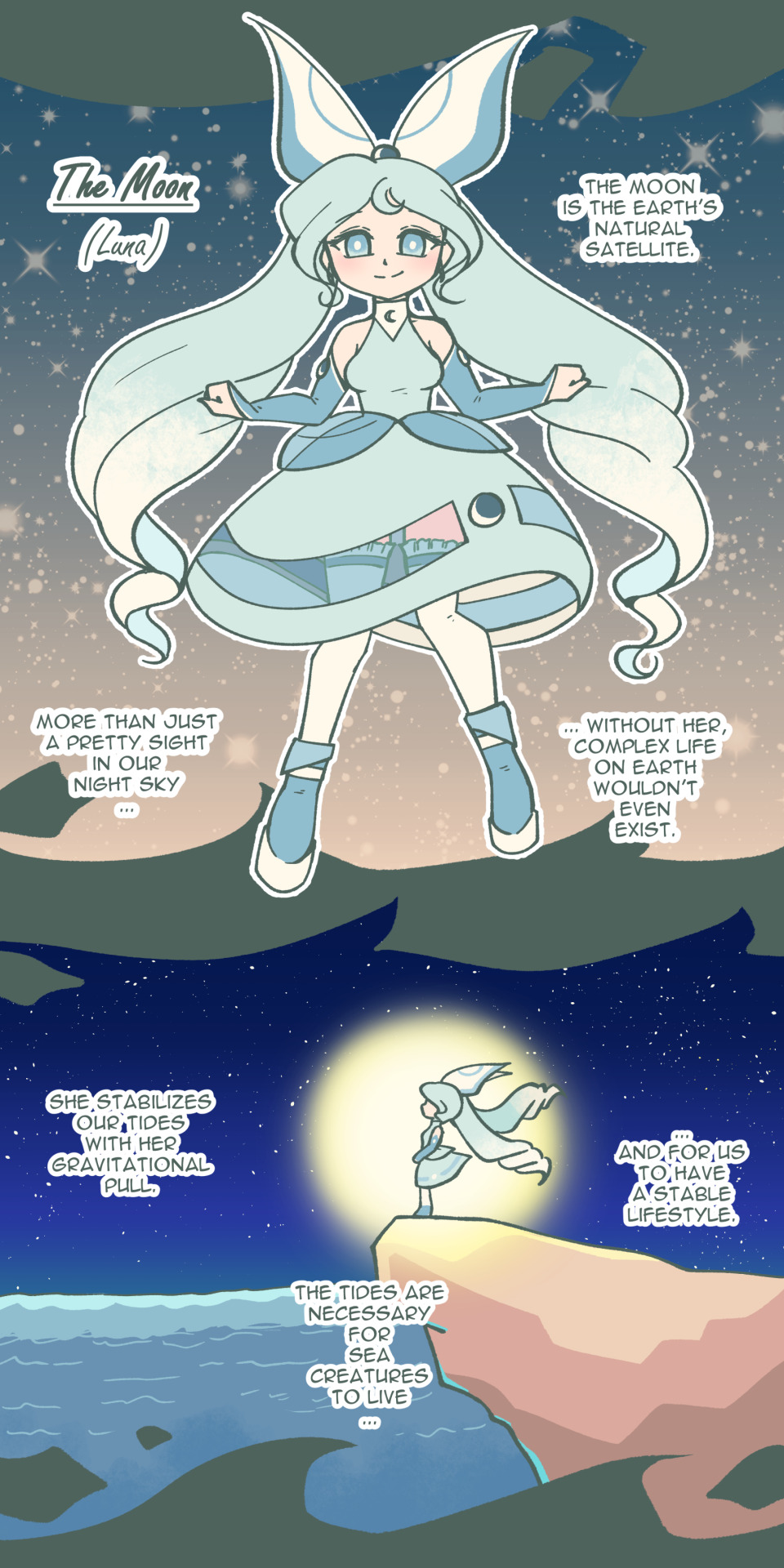
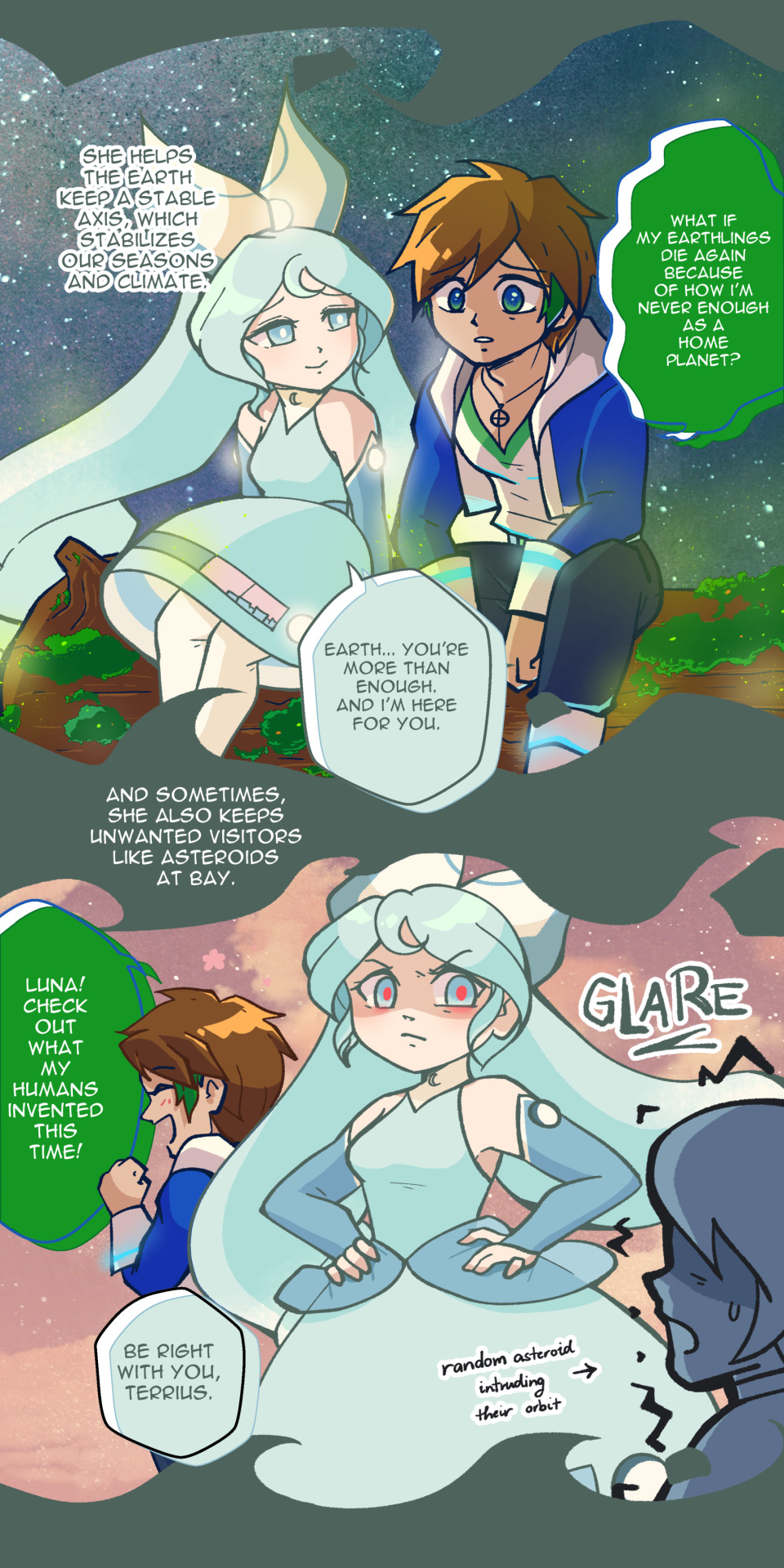



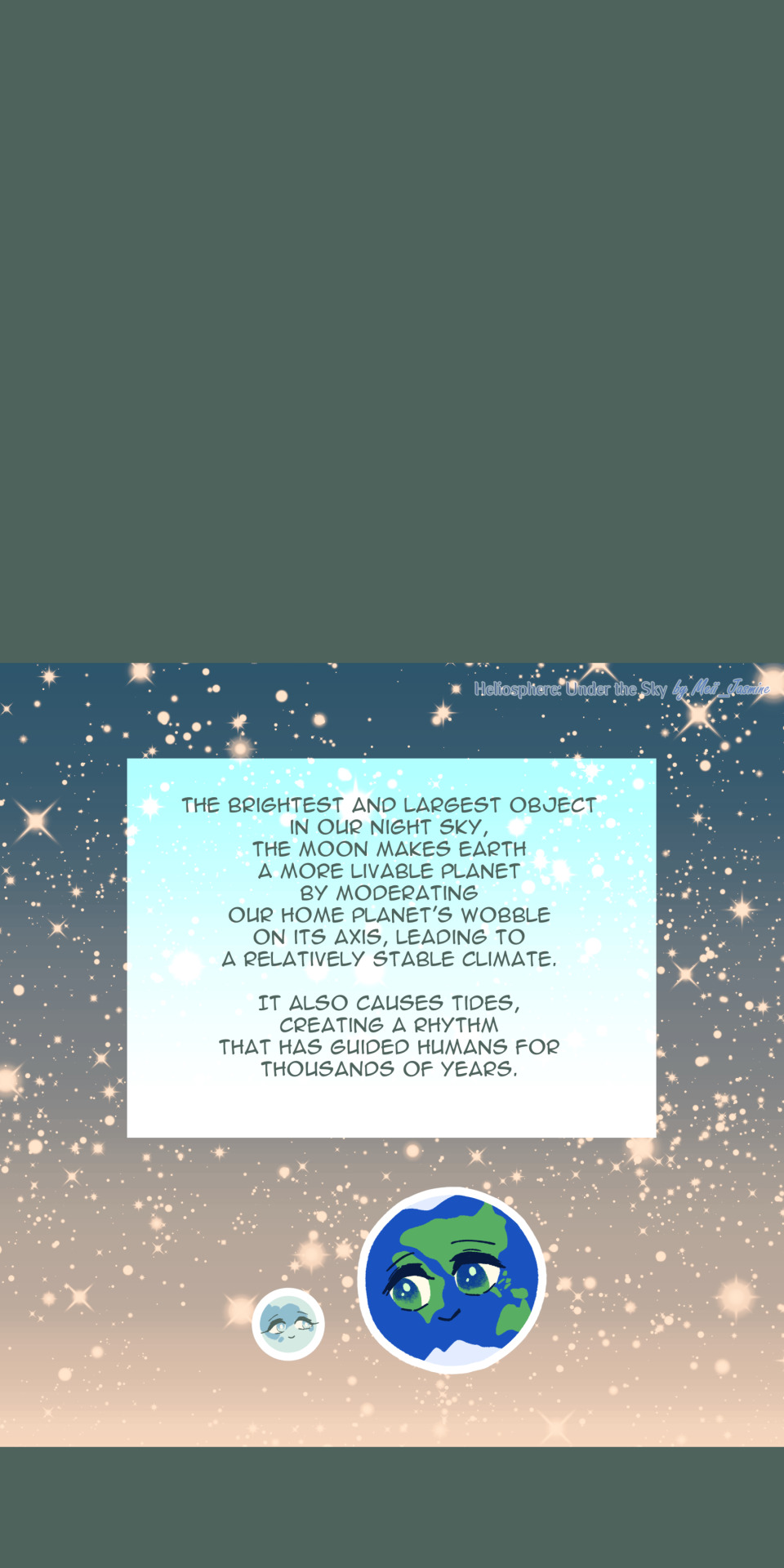
COMIC: The Moon of Earth
(Heliosphere: Under the Sky is an original solar system project with personified stars and planets)
Space facts!
The brightest and largest object in our night sky, the Moon makes Earth a more livable planet by moderating our home planet's wobble on its axis, leading to a relatively stable climate.
It also causes tides, creating a rhythm that has guided humans for thousands of years.
NASA's page about the Earth's Moon. | NASA's article about the Supermoon (apogee and perigee) | Total Diameter of the Planets (via WolframAlpha, 2023)
#NOTE: the distance of the moon varies so the planets part needed double checking. earlier versions may be erroneous. apologies.#various sources came up with different figures so i stuck with NASA and WolframAlpha's figures for that comic panel#more sources have been added since then. thank you for understanding!#art#webcomic#comics#webtoon#webtoon canvas#webtoon creator#webtoon comic#solar system#solar system gijinka#space gijinka#earth#moon#terrius#luna#moon gijinka#pluto#meiousei#comic#working on these comics made me grab a NASA shirt lmao#heliosphere: under the sky#tag commentary
42 notes
·
View notes
Text
My man’s 1st house Chiron being sandwiched right between My White Moon Selena and Ceres in my 3rd house, and me communicating to him every time I see him that he’s insanely good-looking. 🥲
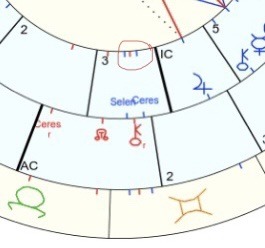
Note: White Moon Selena represents our light💡ie altruistic and nurturing traits. It’s the opposite of Black Moon Lilith as it’s the point of the Moon’s orbit closest to earth (the lunar perigee) rather than the point farthest from Earth (the lunar apogee/Black Moon Lilith).
Ceres is a dwarf planet that also tends to represent nurturing and support. And I can really tell that it’s on my partner’s ascendant natally. So I’m happy to be able to nurture him too, with my encouraging and healing words.
It’s perfect that I made this conscious synastry realization while the Gemini Sun is even starting to shine its spotlight on these three points in the chart/our charts. 🌞🤍
#astrology#synastry#chiron#body image#ceres#white moon#White Moon Selena#black moon lilith#astrology observations#gemini season
7 notes
·
View notes
Note
Why don't we just use the astrophage rockets to move the Earth closer to the sun?
forgive me. i have been awake. stratts wish is my command command is my command. it's not her fault though. it's the goddamn time zones. why can't it be greenwitch everywhere
anyways, we can't do that because. that is not viable. we are so so so low on astrophage how would we get that much to move the earth?? that would very likely break the earth in multiple places, even if we get the earth to stop spinning so as to move it. also, you'd need breaks to stop its movement and constant adjustment for multiple years to get the apogee/perigee right. it's simply not an option, because we can't do that.
there are, in all reality, very few viable ways to deal with astrophage. trust me. i've been in all the "what the heck do we do!!" meetings. stopping the CO2 in venus' atmosphere isn't viable, either. then they'd just go to the next-most-CO2-dense planet. also: how do you remove 97-something % of a planet's atmosphere???
#i am going to go to sleep now#i get data on this freaking ship for ten minutes and i doomscroll and blabber on about atmospheres and orbital physics#this is why we cant have nice things (data)#|| blog tags:#graceoutinspace#project hail mary#andy weir#phm#ask blog
8 notes
·
View notes
Note
i was wondering how come you aren’t disclosing good day au heart’s name? /nf! was just curious
Oh!! I can reveal it now! Apogee is his name :]
Which is "the point in the orbit of an object (such as a satellite) orbiting the earth that is at the greatest distance from the center of the earth. also the point farthest from a planet or a satellite (such as the moon) reached by an object orbiting it compare perigee."
15 notes
·
View notes
Note
Side head cannon , because billy grew up in a toxic house hold he probably doesn't celebrate birthdays , it be cute to see Eddie ( or any other pairing ,idk I just love billy ) ,but that they would have a surprise party for Billy's birthday ,but something goes wrong , like billy starts swinging and accidentally knocked Steve out - just a thought and I love your work 💚
Billy was born eight days after the vernal equinox, a time when the tides were much larger than usual, a colder season not suited for surfing, but great for staring into the horizon as the sun touched the water. His mother wasn’t great at explaining science, or astronomy, but she used to love telling him about the way the sun’s distance affected how the ocean surged onto the shoreline, about how the vernal equinox was a time when the moon and sun worked together and exerted their influence on the waves. His mother would tickle Billy’s feet, mimicking the ocean, and tell him he was her little sunshine, always pulling her towards him.
Before, when his mom was still around, and they still lived in Cali, she would take him to watch the waves during the equinox. They’d talk about the moon and the sun, and he’d tell her about lunar perigees and apogees at the tender age of seven, giggling at her look of wonder as she exclaimed: “how can my little sun-star be so smart!”
Those were the years when they would still celebrate his birthday, when Neil would begrudgingly go to buy a crappy little ice cream cake from Baskin-Robbins and they’d sit at the table and blow out the candles after his mother tried coercing Neil into singing the titular song. It was always a day filled with tense smiles, but his mother did her best to shield him from the strife of her marriage, at least for one day.
Billy never really liked his birthday because of that, he knew his father hated having to be in a good mood, being told to “Just be nice for one day, Neil, please! It’s your son’s birthday for god’s sake!” So yeah, Billy kind of hated his birthday if he was being honest, everyone always had to make an effort for him, it’d be better if they never did anything at all.
He liked the equinox better, the day when his mom would make some small excuse to go out to the beach, Neil would roll his eyes at her little “hippie shit,” but would take an excuse to have the place to himself for a bit. That day was “for mommy and her little sun-star.” She said that on the equinox, she went out to see the tides, and felt his little feet kicking up a ruckus in her belly, told him he was meant for the sea,
“I felt you kickin’ and I just thought, my little surfer’s gonna be riding waves as soon as he can stand! I think you were already practicing in my belly, perfect form and everything.”
She would laugh that special laugh of hers, the one that sounded like a seashell wind chime—mid-toned and comforting—and hold his hand as they made their way down the beach.
Then she left, and Billy never celebrated his birthday again.
Well, Neil did keep it up for a bit, but it was always an excuse to make Billy do something he didn’t want to.
He’d gift him a bat and a baseball, take him out to play until his hands hurt and he was crying, just for Neil to silently squeeze Billy’s small wrist and whisper to him that he “didn’t raise no pussy for a son.” Billy’s cheeks would be hot with tears in the mild spring weather, and the other mothers at the park would stare at him as if he were doing something bad, as if that’s why he was crying and not because his wrist felt like it was going to break. Even back then, everyone always thought he was the monster; Neil was good at that, turning people into monsters. He turned his mother into one too, made her into an ocean that never felt the pull of the sun anymore.
Neil always made Billy’s birthday about him, it was never about Billy, it was about turning Billy into the kind of man he wanted.
But once Billy was in middle school, Neil stopped. He said a boy his age “didn’t need no goddamn presents. The world doesn’t hand out lottery tickets just for being born, you make something of yourself or you don’t get shit.”
Billy didn’t mind, it meant he didn’t have to keep getting bruises or beatings wrapped in fancy paper, lashings that spelled out the word “life lesson” across his back with black leather.
That was one thing Neil got right: if he wasn’t getting it for himself, he didn’t need it. Billy wasn’t going to celebrate birthdays anymore, if he wanted a girl, he’d flirt his way into her panties. If he wanted that blue Camaro, he’d work his ass off for three summers until his hands stung from grease burns and his knees felt like they would buckle from never sitting down; and if Billy Hargrove wanted to feel like he was the sun pulling the waves, he’d ride up to Hawkins high blasting that sweet music and swallow every last drop of acrid beer he could until they crowned him king.
But then Eddie Munson happened. Ratty, crazy, freaky Munson from Forest Hills trailer park, with his dumb as shit grin, and his stupid black nails. Billy hated the freak, hated how he’d smile at him and make fun of the basketball team, tell him he was just an attention whore who “thinks he has life figured out because he’s cool enough to go to parties and toss balls into laundry baskets—and get rewarded for it!—but you’re the real freak, Hargrove.”
He can’t stand that Eddie Munson doesn’t bend to the sun, doesn’t pull towards him like the ocean or stare up at him like a sunflower, he just bores crazy eyes straight at him and sticks out his tongue.
Billy tries, those first few months, to fuck with Eddie, to trip him in the halls and stiff him for weed when he goes to buy some, just to get a leg up. But Eddie always dodges, like he’s used to people being out for him, always slips out of reach when Billy makes a move for the plastic baggie in Eddie’s hand. The shit-for-brains fails almost every math and science test he takes, and trips over his own two feet even when sober, but as soon as someone tries to pull the wool over him he’s suddenly Harry-Fucking-Houdini, master escape artist who sees bullshit coming from a mile away.
Then Billy catches him in the showers the one time he comes to gym, he’s sore and took most of his anger out on Harrington that day, so he just throws Eddie a compliment about the tattoos he’s got. Says they’re nice, and Eddie stutters, explaining how some of them were inspired by certain songs, and Billy gives a little smile at the musical references and says “that’s cool.”
It didn’t mean anything, he was just tired and feeling nice from the water, but he sees Eddie just kind of freeze up. He looked like a baby puffer fish, big black eyes and this dopey, tight-lipped smile, and suddenly Billy wasn’t feeling so nice anymore. So he tries something, he slams a hand into Eddie’s shoulder and watches as he slips and falls flat on his ass with a yelp. Billy feels like he’s on top of the world for a moment, smirks at him with that particularly cruel smile he knows gets the guys riled and the ladies hot.
“Plant your feet next time, Munson.”
From then on, things change, Billy notices he can make Eddie blank for small periods if he just gets sweet with him here and there, throws him off with talk about his nice rings or flashy guitar work.
Before he knows it, they’re sucking face after Billy goes and watches him play and Eddie buys him a drink. Fast forward a couple months and they’ve been going steady long enough for Eddie to make nice with Max, who says Billy’s gotten “way less shitty since he started playing that dumb nerd game with you.” So he probably shouldn’t have been that surprised when he goes to Eddie’s trailer one gloomy March day and all the lights are off. He shouldn’t have gotten so freaked when they suddenly turn back on and Eddie’s right in his face with a kazoo hanging from his mouth, but he is.
He’s freaked, because it’s a day like any other in this shitty mud-slick town that’s gotten just a little less fucked now that Eddie’s in his life, so there’s no reason for people to be in his face making noise. Billy regrets the arm that shoots out and clocks Eddie right in the nose as soon as it makes contact, can hear the silence and small gasps that fill the room from Max and her friends, who were finally starting to warm up to him.
He wants to do something, to apologize, even just to say “what the fuck?!” but when his eyes fall on the 29 that’s circled in red on the calendar that Max is holding, he freezes.
Max didn’t know about his mom, didn’t know about the equinox or how he was born to surf, didn’t know anything except that “birthdays are for losers, Max, if you want something, you make something of yourself or you don’t get shit.” She must’ve thought he’d changed.
Billy also thought he’d changed, even if it was just a little. But maybe he really was the monster.
Billy still wanted to think he was the sun, wanted to hold onto the seashell wind chime that tickled his ears and his feet, the one that told him he was born for the ocean. Instead, he felt like the bottom of the sea, the place where light didn’t shine and beasts swam, that deep unknown that was crawling with other-worldly malice.
Steve and Robin, who’d also stopped by, took the kids home after that. Billy just walked to Eddie’s room without saying a word and looked for the first-aid kit.
He tried to help fix up Eddie’s face, who protested a bit saying “it’s just a scratch, it doesn’t even hurt!” But who flinched as Billy’s hand came to touch the bridge of his nose.
Billy couldn’t really hold it in after that, he felt those hot tears on his face again, felt Neil’s hand close around his thin, eleven year-old wrist, and he wanted to scream and say that it hurt. He wanted to tell Neil that he was going to break him, the same way he broke his mother, but maybe he’s already broken because he’s staring at Eddie’s freaked-out expression and seeing Neil’s fist in his mothers face. Billy can’t stop crying even as Eddie wipes at his cheeks and tries to ask so carefully—so softly—what was wrong.
But that’s exactly what was wrong, Eddie treating him so tenderly, like he was dangerous; he must’ve been scared Billy was going to punch him again, hit him, take his anger out on him like a monster—like Neil.
He’s pushing Eddie’s hands away and yelling about how it isn’t his fault, because somehow, someone has to know; they have to know that Billy Hargrove was born for the ocean, that he was made to surf, that he was born eight days after the vernal equinox and he has the sun in his hair and the ocean in his eyes. Someone has to know that he’s a fucking sun-star that got stuck in a tide pool that’s about to dry up, that he’s not a monster.
That he’s not his father.
Even after all these years Billy has to cling onto the words of the woman who looked at him like she’d never be able to resist the pull of his little hands, even after she left, because she was the last one to ever look at him like he meant something.
But then Eddie is getting up and leaving, and Billy can’t even hold onto him, he can’t even stop fucking sobbing like some girl who just got left at the altar, and he wants to kill himself before he does something worse; he’s about to make a run for the door when Eddie comes barreling in with a bucket and he doesn’t even have a moment to be confused before getting a face-full of salty fucking water.
The bed is soaking wet under him and the salt prickles his mouth and eyes because shit that’s too much salt, and then Eddie is yelling at him, looking manic while holding onto an empty bucket just inches from the bed.
“I’ve never had a fucking fish, and I don’t know what the fuck a sun-star is, but I’m going to guess it needs salt water and I’m not about to let you shrivel up and die in a—a fucking, tar-pool!!!!”
The poor rock-headed idiot is heaving large breaths and looking so fucking crazy-concerned that Billy can’t help just fucking laughing, laughing so hard he thinks he might throw up.
“Eddie what the fuck is a tar-pool? I said tide-pool, you’re such a fucking birdbrain!”
And then Eddie is laughing too, and now he’s got a damn nose bleed from all the commotion and neither of them can even give a shit anymore, they just stay there like a couple of crazies who escaped from the looney-bin.
The rest of the day is just whittled away eating ice cream and watching horror films, Billy slowly opening up about his mother and his birthday, and Eddie just listening.
They make out, they fuck, life goes on. Eddie promises he won’t give him another surprise like that, and the gang come around the next day and they all go out for pizza. They laugh about how hilarious it would’ve been if Eddie had swallowed the kazoo he’d been holding in his mouth when Billy punched him, Dustin mimics someone choking, interspersing poorly-practiced kazoo noises into the performance while Eddie tries to protect his honor. Nobody calls Billy a monster, nobody talks slow and quiet to him, everybody just keeps treating him like the same asshole-in-recovery they always say he is.
The following year, Eddie gives Billy an anklet, a small silver chain with a starfish on it, and he doesn’t give it to him on his birthday, he gives it to him on the 21st of March—the vernal equinox. Billy wears that anklet the entire summer while he works as a lifeguard, makes sure to only wear flip-flops or go barefoot just so he can show it off.
Eddie isn’t the ocean, but he still makes Billy feel like the sun.
146 notes
·
View notes
Text
Orbital Mechanics:
Anatomy of an Orbit
So, we've discussed how an object can be launched into space in such a way that it enters orbit: a state of constant falling around a massive object such as the Earth.
A quick note: In my last post I used the term trajectory, which is going to come up quite a bit in the future. In case you're unfamiliar with it, it's essentially just a term for the path an object is going to take as it moves- or in our case, as it orbits.
Now that we've covered what an orbit is and how it happens, we need to be able to describe it as well. As it happens, the majority of orbital trajectories appear as ellipses, so this post is going to largely be about geometry!
As mentioned, many orbits will form ellipses with the center of mass (the object being orbited) at one of the foci. Circular orbits are also considered, in which both foci will be at the center, however, actual circular orbits are impossible to truly achieve.
Before getting into the heart of what defines an orbit, there are two very important terms to mention: apoapsis- the furthest point of an orbit, and periapsis- the closest point. However, the naming here can get a little tricky, as the names for these particular terms can change based on what the center of mass of the orbit is.
Though they have a slightly different meaning, apocenter and pericenter are used generically instead of apoapsis and periapsis.
If the center of mass is the Earth, these points are referred to as the apogee and perigee.
For moon-centric orbits, apocynthion and pericynthion are used, or sometimes apolune and perilune.

To try and avoid confusion, I'll always be using the terms apoapsis and periapsis when I discuss orbits. And now that we've got those terms defined, we can get into the rest of the post!
There are six variables that fully define the orbit of an object in space, known as the Keplerian Elements of an orbit. The first two are used to define the shape of the ellipse:
Semi-major axis (a): The distance from the center of the ellipse to one end of it. Also worth noting is the semi-minor axis (b), which runs perpendicular to a.
Eccentricity (e): A measure of how circular or elliptical an orbit is. An eccentricity of 0 is perfectly circular, and as eccentricity approaches 1 the orbit becomes more elliptical.


The next two variables describe how the ellipse is positioned in space around the center of mass. However, to describe where an orbit is in space, we must first create a reference plane to compare it to. If that doesn't quite click, consider a coordinate grid. We can assign a set of coordinates (x, y) to an object using a grid, but those numbers only make sense because we know where the origin (0, 0) is. Likewise, describing the angle of tilt of the plane of our orbit only makes sense if we have a reference plane to compare it to.
For geocentric orbits (orbits where the central mass is Earth), the reference plane is the plane on which the Earth's equator lies and is referred to as the equatorial plane.
Inclination (i): The angle formed between the plane of the orbit and the reference plane. In other words, the tilt of the orbit. An inclination of 90° means the orbit is perpendicular to the reference place.
Longitude of the Ascending Node (Ω, uppercase omega): The line formed by the intersection of the orbital plane and the equatorial reference plane is the ascending node. The Longitude of the Ascending Node tells us where the ascending node is by measuring the angle formed between this line and a reference line on the reference plane. For equatorial orbits, the reference line is the First Point of Aries (♈︎).

Finally, two additional variables define both the orientation of the orbit and the position of the orbiting body:
Argument of Periapsis (ω, lowercase omega): This is the angle formed between the ascending node of the orbit and the periapsis of the orbit, on the orbital plane. If the closest point of the orbit is where the orbit crosses the reference plane, then the value of this is 0°.
True Anomaly (ν or θ, theta): Where an orbiting body is on its orbit at a certain time, measured as an angle from its position at the starting time to its current position.
Now that we've covered all the essential parts of an orbit, we can accurately describe any that we come across! We can also combine them all into one of my favorite pictures describing them all at once.

// Index
// Previous Post
// Next Post
6 notes
·
View notes
Text

Best Greetings
Planets Data Analysis Is The Best Astrophysics Research Method
I use the planets data analysis to discover the planets creation and motion facts–
the method is a simple one – as they use anatomy to study a creature body- and also use the generics for more detailed study about this creature– I use Planets data analysis to discover the planets creation and motion rules and facts.
means– I use the analysis of Planet diameter, mass, orbital distance, period, velocity, inclination, rotation period, axial tilt and all its data to discover this planet creation and motion facts - Let's use one example to explain how this method works
Example No. (1)
I asked (How Is Planet Data Created?) – Means – (How is Planet diameter, mass, orbital distance, period, velocity, inclination, rotation period and axial tilt created?
The book answers (Planet data is created by random process, initial conditions and historical unknown factors)
Shortly – the book tells no any geometrical rule or reason be found behind Any Data
Here – I Use The Planet Data Analysis To Test This Idea –
And
I have discovered 5 equations can conclude the planets data – my first equation defines each planet orbital distance- and my second and third equations define planet velocity- and – my fourth equation defines each planet diameter as a function in its velocity and rotation period - my fifth equation analyzes planet velocity.
By these equations – the solar planets data can be summarized in following ……
Based on the planets velocities rates the planets diameters, masses, velocities and inclinations are defined and
Based on the planets velocities square rates the planets orbital distances are defined, and - Based on the planets velocities cubic the planets orbital periods are defined
Means
The planets (all) data can be concluded theoretically by my five equations –
Shortly
By one data only (Mercury orbital distance = 57.9 million km) and by my five equations I can conclude all planets orbital distances, periods, velocities, inclinations, Diameters, Masses, rotation periods and axial tilts – all data can be concluded theoretically by mathematical calculations only and with need for any observation
But – The book tells (Random Process)
If the data is created by (random process) how can be concluded Theoretically?
The book is mistaken.
I wish I explained the massive support for my research- by this support – I can review the book and tell the book is wrong in some points - because – I don't put my ideas – I put the planets data
Briefly
The planets data analysis method puts the theory in comparison with the planets data to know if the theory tells a fact –
NOTICE
The planet data can be concluded theoretically because the data is created based on exact equations (my five equations)- this fact is a simple one and the industry of the airplane or rocket can help us because the designer of any airplane or rocket needs to use exact equations to define this airplane length, width, weight and all data otherwise this airplane can't fly safely – similar to that – the moving planet under the physics laws has to define its data based on exact equations to move safely
Example No. (2)
Why Is The Orbital Apogee Radius = 406000 Km?
The moon daily displacement =88000 km and during 29.53 days (the moon day period) the displacements total be = 2.598 million km = 2π x 413600 km
The data tells us the moon orbital apogee radius should be 413600 km and also it tells, because the moon daily displacement (88000 km) is so long, the moon should revolve around the Earth through this apogee orbit its radius (413600 km) only and can't revolve around the Earth through any more near orbit…
Not Facts
The moon orbital apogee radius =406000 km only and the moon revolves around the Earth through near orbits and can reach to perigee radius (363000 km).
How Can The Moon Do That?
The intelligent moon creates an angle (θ) between its motion direction and its orbit horizontal level by that the real displacement (L) through the orbit be less than (88000 km) because it be (L = 88000 km cos θ), as a result the total displacements be less than (2.598 million km) and that makes the moon orbital apogee radius to be decreased from 413600 km to 406000 km.
We should pay attention for the angle (θ), because this angle controls the moon motion features – where- with the angle (θ) increasing the real displacement (L) be shorter and the moon can revolve around the Earth through more near orbits – but –with the angle (θ) deceasing the real displacement (L) be longer and that pushes the moon far from the Earth to more far orbits.
The moon orbital motion depends on this angle (θ) it tells θ1 = θ0 +1.7
where (θ1) = today angle and (θ0) =yesterday angle
1.7 degrees be used as the moon daily motion degrees for the equation
Shortly
The planets data analysis puts the planet data in comparison with the theory to test the theory ideas
Example No. (3)
Can Mars Itself Cause The Earth Moon Creation?
Giant-impact hypothesis tells (NO) – but let's see the planets data analysis
I Suppose - Mars Original Orbit Was Between Mercury And Venus
The order (Mercury – Mars – Venus – Earth) shows correct order in planets diameters, and orbital distances (and masses)
BUT – Mars had migrated from its original orbit (between Mercury and Venus) to its current one (227.9 million km) and Mars had collided with Venus and then with the Earth in its migration motion – and Mars itself has caused the Earth moon creation.
My Mars Migration Theory answers many left questions by Giant-Impact Hypothesis – for example -
Why Does Venus Have No Moon?
Mars had migrated from its original orbit (between Mercury and Venus) – and moved to its current orbit (227.9 million km) – BUT- Mars had moved by a force – and then Mars had collided with Venus –and Mars had pushed ALL DEBRIS with it in its Motion Direction because of its strong motion
Venus had found no debris around and for that Venus couldn't create its moon
But –
The Earth mass is greater than Venus' and the debris lost some of their momentum for that the Earth could attracted some debris and created its moon.
Mars has 2 moons and this fact supports my theory because Mars with small mass could attract two moons because the debris were around it while Venus has greater mass but couldn't create its own moon because the debris are moved with Mars motion.
The rest debris are attracted by Jupiter gravity and created the asteroid belt
Notice
My five equations tests and discussions are in point no. (4) of this paper
The moon orbital motion analysis is in point no. (14) of this paper
Mars Migration theory is in point no. (14) of this paper
The refutation of Newton theory of the sun gravity is in point (3) of this paper
Thanks
Physics Nobel Prize For Imaginary Ideas!
or
Physics Department- Physics & Mathematics Faculty
Peoples' Friendship university of Russia – Moscow
Curriculum Vitae https://www.academia.edu/s/b88b0ecb7c
E-mail [email protected], [email protected]
ORCID https://orcid.org/0000-0002-1041-7147
Facebook https://www.facebook.com/gergis.tawadrous
VK https://vk.com/id696655587
Tumblr https://www.tumblr.com/blog/itsgerges
Researcherid https://publons.com/researcher/3510834/gerges-tawadrous/
Google https://scholar.google.com/citations?user=2Y4ZdTUAAAAJ&hl=en
Livejournal https://gerges2022.livejournal.com/profile
Pocket https://getpocket.com/@646g8dZ0p3aX5Ad1bsTr4d9THjA5p6a5b2fX99zd54g221E4bs76eBdtf6aJw5d0?src=navbar
PUBLICATIONS
box https://app.box.com/s/47fwd0gshir636xt0i3wpso8lvvl8vnv
Academia https://rudn.academia.edu/GergesTawadrous
List of publications http://vixra.org/author/gerges_francis_tawdrous
Slideshare https://www.slideshare.net/Gergesfrancis
#математика#астрономия#наука#геометрия#космос#электричество#русский tumblr#quantum physics#physique#astronomy#астрофизика#квантовая физика#наш физик легенда#физика#астрономи#physics#astrophysics#учеба#ошибки#scientists#science#10 класс#mathematics#maths#школа#русская школа#русский тамблер#решение задач#задачи#механика
10 notes
·
View notes
Text


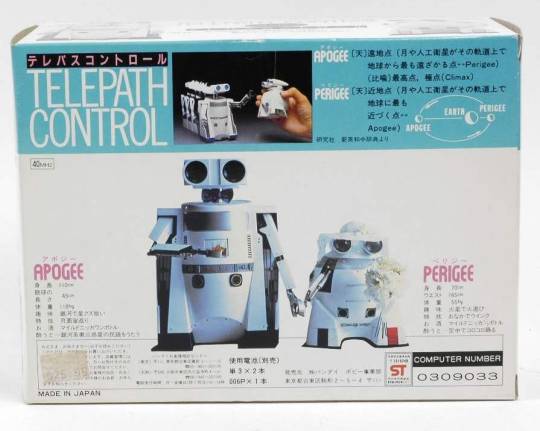

MildRobo Telepath Control Robots (AKA Apogee & Perigee) by Bandai and Popy, Japan (1984). Mild Boy (Apogee) and Mild Girl (Perigee) supposedly communicate through some kind of cosmic telepathic connection but this pair, disappointingly, are simple battery operated radio-control robots. "You can look into their crystal eyes and see love that they are seeing. Talk to them, play games with them, listen to them, sing with them. Watch them, laugh with them, and discover the feeling of love and friendship again and again and again." Bandai brought the Lov-Bo-Gi-Bots series to the US in 1985, where Mild Girl became Lov-Gi (Girl) Bot and Mild Boy became Lov-Bo (Boy) Bot.
7 notes
·
View notes
Photo

Rare 'blue supermoon' — the biggest and brightest full moon of the year — rises Aug. 30 | Live Science
The biggest and brightest full moon of 2023 will rise on Aug. 30, and its strange name deserves an explanation. Called a "blue supermoon," it is the result of three lunar phenomena happening at once.
The "blue" supermoon's name has nothing to do with the moon's color. In fact, it will actually be orange. The blue supermoon gets the first part of its name for a different reason: It's the second full moon in August.
There are two types of blue moon. The August blue supermoon falls into the first category: two full moons occurring in the same month. That's occasionally inevitable; a new full moon rises every 29.5 days. Given that the Sturgeon Moon occurred on Aug. 1, 2023, the Aug. 30 full moon will be a blue moon. Blue moons of this type, called "calendar blue moons," occur roughly every two or three years, with the next one occurring on May 31, 2026, according to timeanddate.
The second type of blue moon, called a "seasonal blue moon," describes the third full moon of four during one astronomical season. This occurs when a calendar year has 13 full moons instead of the typical 12. (A lunar year — 12 orbits of Earth by the moon — takes 354 days, while Earth's solar year is 365 days.) The next seasonal blue moon, which also happens every two or three years, will occur on Aug. 19, 2024, according to timeanddate.
So, where does the second part of the name come from? A supermoon occurs when the full moon is close to its nearest point to Earth in its orbit. The moon's orbit of Earth is elliptical, so every month, it reaches a closest point (perigee) and farthest point (apogee). Moons that come within 90% of perigee in a given month qualify as supermoons, according to Fred Espenak, an astronomer and former eclipse calculator for NASA.
August's second full moon is the third and closest of four supermoons in 2023. At 222,043 miles (357,344 kilometers) from Earth, it will be the biggest and brightest supermoon of 2023, though it will be only 20 miles (33 kilometers) closer than Aug. 1's full moon, which was 222,023 miles (357,311 km) away.
The next full moon will be the Harvest Moon, on Sept. 29. In addition to being one of the best-known full moons of the year, it's the last supermoon in 2023.
Find out the exact time of moonrise for your location, and prepare for the spectacular sight of the blue supermoon on the eastern horizon next week. ...
13 notes
·
View notes